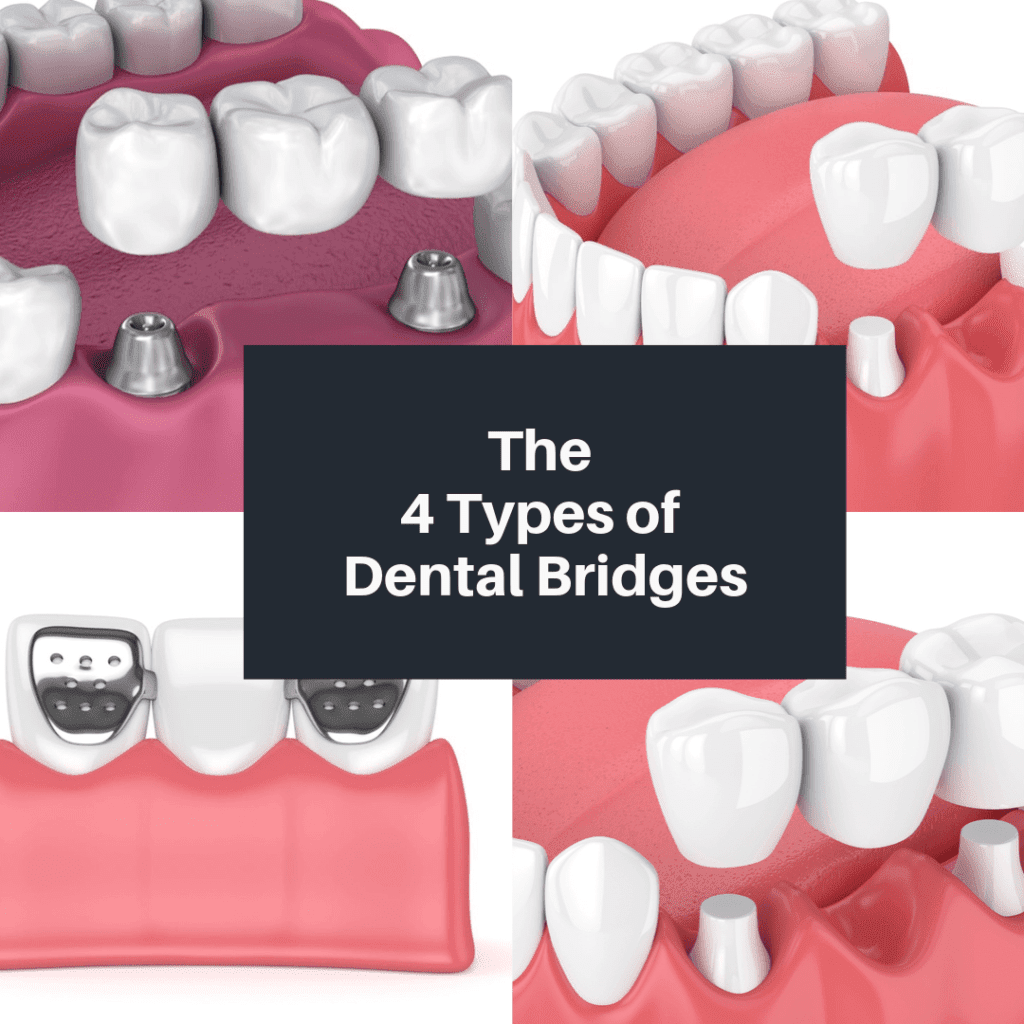Whether you’ve lost a tooth from past dental trauma or due to decay or damage, any dentist will tell you that it is important to have said tooth replaced sooner rather than later. Replacing missing teeth is essential to maintain proper alignment of the teeth, as well as an even bite. For these reasons, general dentists offer a variety of restorative treatments specifically aimed at replacing missing teeth.
One of these options is known as a dental bridge. Like their name suggests, dental bridges use a pontic, or fake tooth, to bridge the gap left by a missing tooth. Depending on the number of teeth missing, multiple pontics may be used to replace multiple missing teeth in the same area of the mouth. However in order for a dental bridge to be placed, there must be healthy teeth on either side of the gap that are strong enough to support the dental bridge.
If you’ve decided upon a dental bridge to replace missing teeth, there are four different types of dental bridges your general dentist may offer you. In some cases, one type may be better suited for you than another, so your dentist will likely only recommend those that will work well for your case. The four different types of dental bridges include:
Traditional
Traditional dental bridges are made up of a pontic supported by dental crowns on either side that placed on natural teeth. Out of all the different types of bridges, traditional bridges are the most commonly used. When placing this type of bridge, the teeth on either side of the gap must be reduced in size so that a dental crown can be placed over the top. The permanent restoration will be fused together as a single piece that is then adhered to the supporting teeth.
Maryland Bonded
This type of bridge uses the same basic structure of a traditional dental bridge. However, instead of supporting the pontic with dental crowns on either side, Maryland Bonded bridges use a metal framework instead. This metal framework is usually adhered to the back of the teeth on either side of the gap. However, certain cases may also have a metal framework that wraps around certain teeth.
Cantilever
Cantilever bridges are not often used because they are not as strong as other dental bridges. This is because they are only supported using a crown on a single adjacent tooth, rather than being supported by a dental crown on either side. In some cases, they are able to be used to replace a single missing tooth in the front of the mouth. When they are used, cantilever bridges tend to be more affordable and easier to place.
Implant-Supported
Implant-supported dental bridges use the same basic structure as a traditional dental bridge, however the surrounding dental crowns are supported by dental implants rather than natural teeth. This type of bridge is often used when the surrounding teeth have been structurally compromised by decay or damage in a way that makes them unable to support a dental crown. Instead, these teeth can be extracted and replaced with dental implants. An implant-supported bridge is also used in cases where there are multiple adjacent teeth missing.
Overall, if you have missing teeth and are considering a dental bridge, you have the option of choosing between traditional, Maryland bonded, Cantilever, and implant-supported bridges. Each type of dental bridges offers similar structure, however allows for different means of support. Ultimately, a general dentist will assess your individual case to help you select the best type of dental bridge for your smile.

